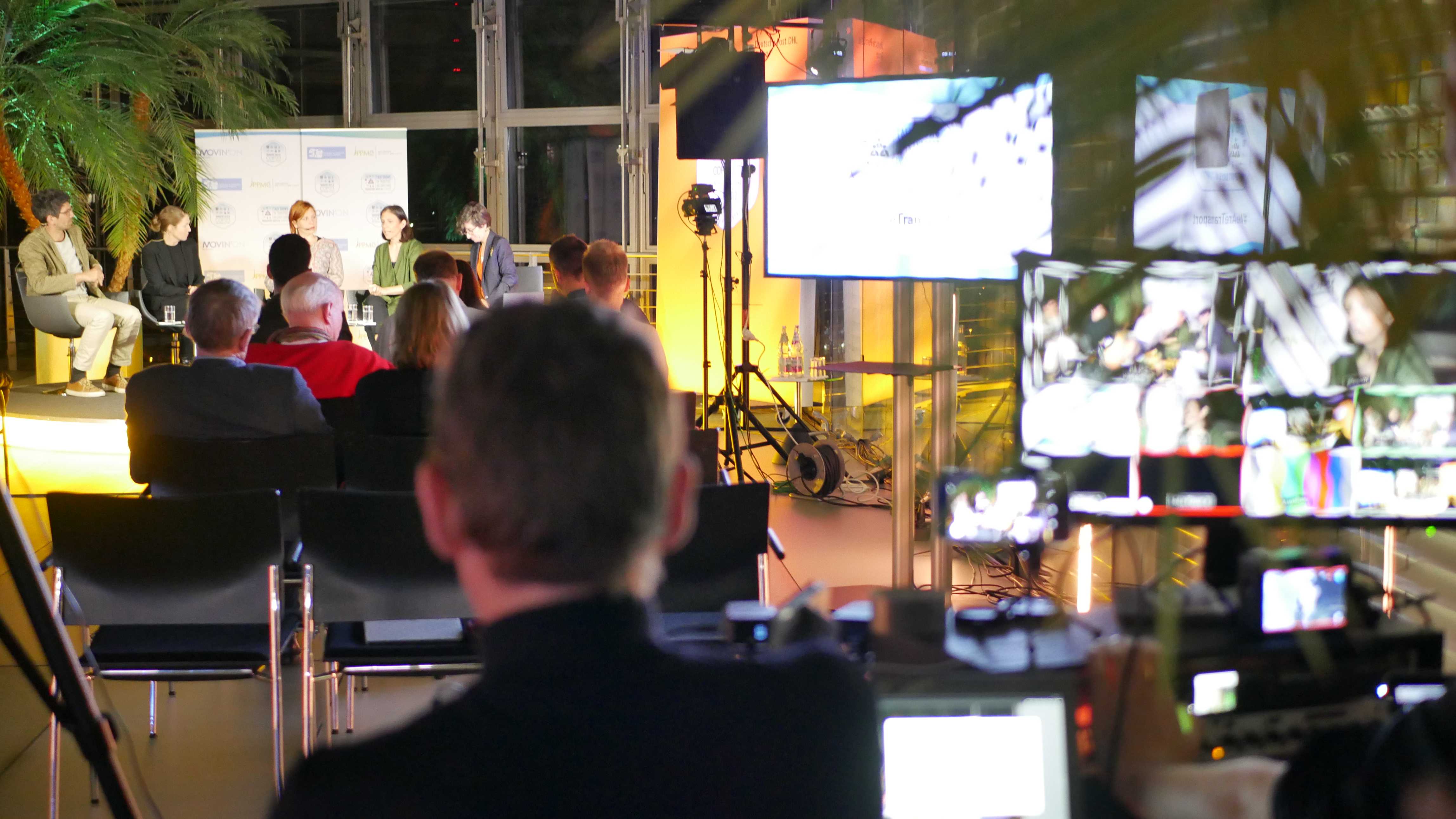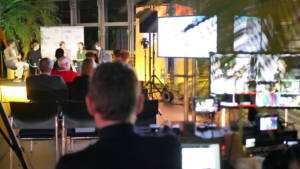Livestream event planning starts with an idea…and a location. The location defines much of what’s possible at the event including size, style and cost. We’ve done this many, many times and use the following location-focused checklist to make sure we’ve got everything covered, and trust us, it’s not just about a power socket and an Internet connection. Feel free to use this list, available as a PDF download below, to help plan your next event. If you’re an agent, think about this list as you discuss requirements and prepare your proposal.
Checklist – Livestream event management
Start your livestream planning with this checklist. It covers everything from decency and barrier-free access to local replay, lower-thirds, and hashtags for marketing. If you’re a live streaming agency you can send this list to your customer before you have your pre-proposal meeting.
- What’s the format and feel? E.g. Local discussion, presentation, launch event?
- Audience numbers. Minimum and maximum. (Note fire regulations.)
- Presentation screen. Cable type. Screen presentation also in live stream?
- How will the presenters stand / sit? Be aware of decency and comfort.
- How many presenters? (Microphone selection depends on this.)
- Will the customer provide a floor manager for timings and communications. How?
- Graphics – Lower thirds. Logos. Images. Slides. Videos. Event posters prepared?
- Local video playback at location? (Think about usage rights for local, video and live stream.)
- Live stream replay in another location? (Live viewing?)
- Background music before event? License?
- Intro, warm-up and housekeeping speaker?
- Transfer of photos and videos from producers. How?
- Which social channels will be used?
- Do you have a hashtag for social media that might need to be included as a video overlay?
- Live stream start time (Leave time for guests to sit and settle and be punctual.)
- Barrier free live stream considerations (audio-off options, live subtitling, post subtitling.)
- Image rights / model release. Bildrecht (Permission to record people in the room.)
- Internet participation (questions from Facebook, YouTube?) How is this managed?
- Timekeeping clock / timer / countdown.
- Feedback screen for speakers. (teleprompter or floor manager communications.)
- Refreshments for speakers.
- Make-up. Pre-event meeting.
Once you’ve got a good feel for the scope of the project, and if you want to continue with it, you can move on to the very important event location visit…
What do you need to know about the livestream location?
Organise a meeting at the location and be sure to meet the facilities manager, or someone else that’s very familiar with the technical and logistical aspects of the site. We can not stress how important this is.
- Background will impact videos, images and live stream – Consider lighting, daylight-evening transition, advertising, screens, windows, plants.
- What noise can we expect during the event? (Air conditioning, road, elevators, other events, catering, drinks, casual discussion.)
- Is audience ambient noise, laughter for example, important for the live stream?
- How will participants sit. Is a stage needed, standing, high chairs. Think about decency, posture and don’t use bean bags because you’ll regret it when the participants start sinking and sweating.)
- Think about decency and comfort, for participants. Age / Gender / disability issues.
- Parking and security for participants and engineers, equipment delivery.
- Barrier free access for people with disability.
- What is the reception process? Tickets, coats, umbrellas.
- Minors allowed? Consider time and content, stage and cameras.
- Security.
- Access for audience. (Good route, parking, public transport, welcome hospitality.)
- Communication between teams on the floor. (Headsets for camerapeople for example)
- Special housekeeping announcements? Fire safety, smoking, phone noises, toilets, catering.
What technical considerations are needed for the event location?
In addition to the general event location considerations, here’s a list of more technically focused questions. Our biggest tip is to check the internet connection there and then for upload speeds. Rarely does anyone know just how much upload speed they have. Do your test over WiFi if you need to, but be somewhere near the router so that you get a good feel for it, and remember, the audience can, at any moment, start live streaming with their smartphones.
- Access for equipment setup. How. When. Security. Storage.
- How many people in the audience?
- Space required for production crew. (front of stage? rear of room? Mobility?)
- Space required for cameras and operators.
- Security of cameras and cable runs. Safety considerations for cable runs.
- Chairs / table / power / lighting for production crew.
- Accreditation / registration / security for access.
- Power for cameras and lighting.
- Local PA system. (Get tech contact information) What cables are needed for live recording? Balanced, unbalanced, cable length. Wireless audio test.
- Local microphones. Available? If so, what type and how many?
- Audience questions microphone?
- Local lighting system. (Get contact information.)
- Pre-event build time. (Local storage. What can be left in room?
- Internet test. Connection location. Firewall. Public internet use during event?
- Cellular capability at location. (LTE signal strength from multiple carriers.)
- Refreshments for producers.
Download this event checklist as a PDF.
Further live stream planning guides
How much does a business livestream cost? If you want to protect the brand, you need to move beyond risky smartphone streaming, shore-up that internet connection and prepare for some lights! this article will show you how much a business-oriented livestream costs.


